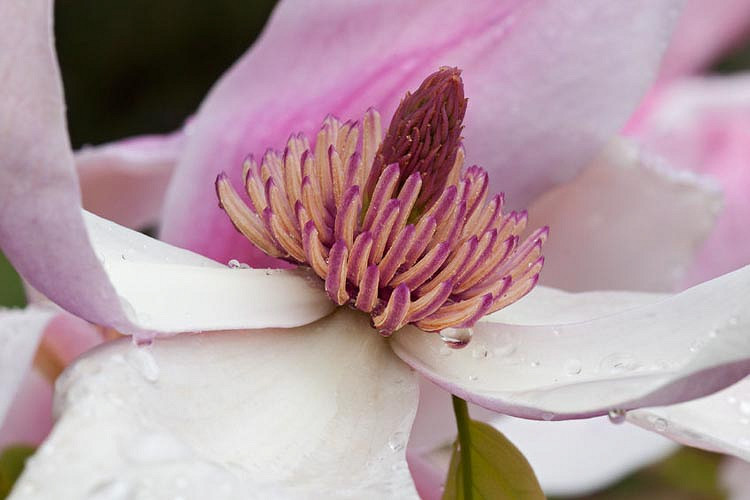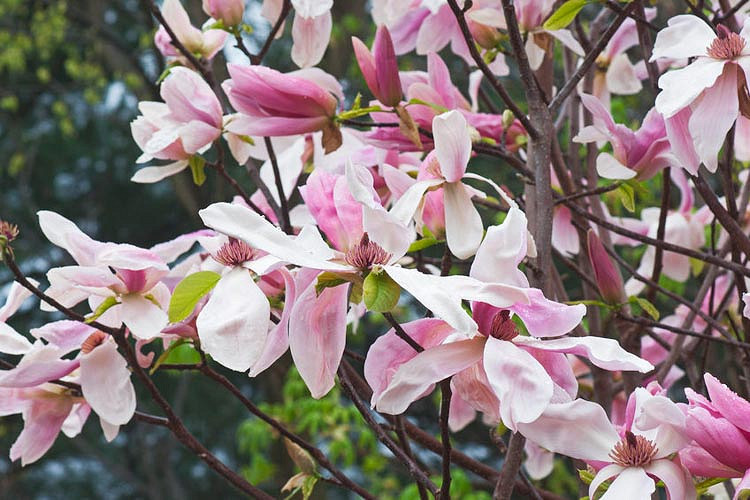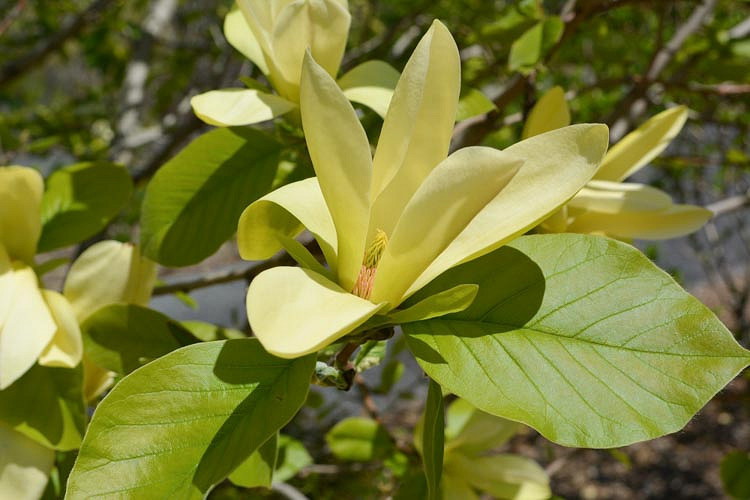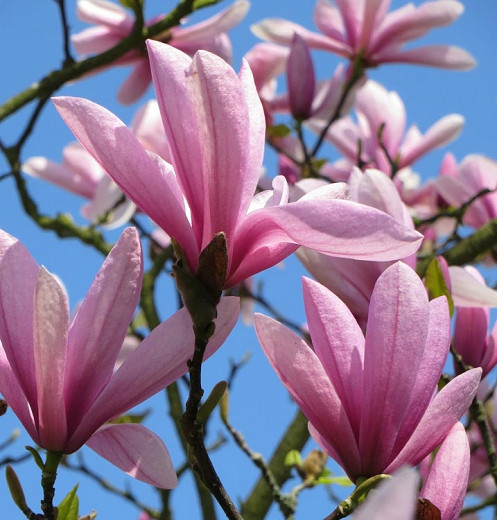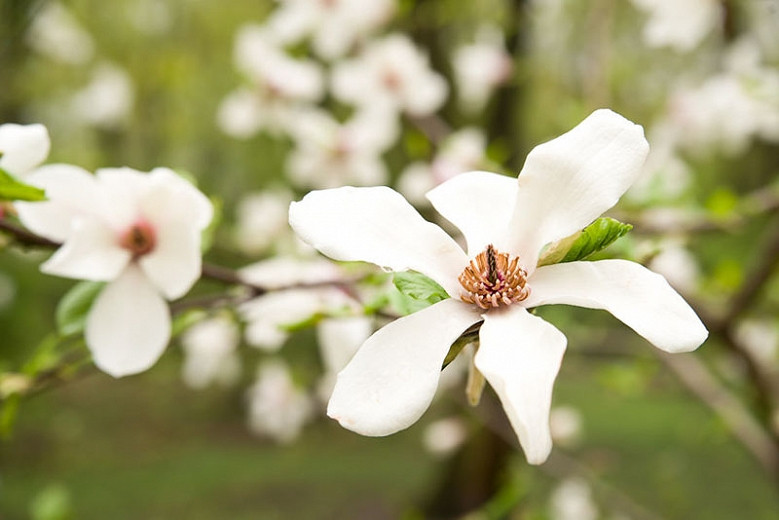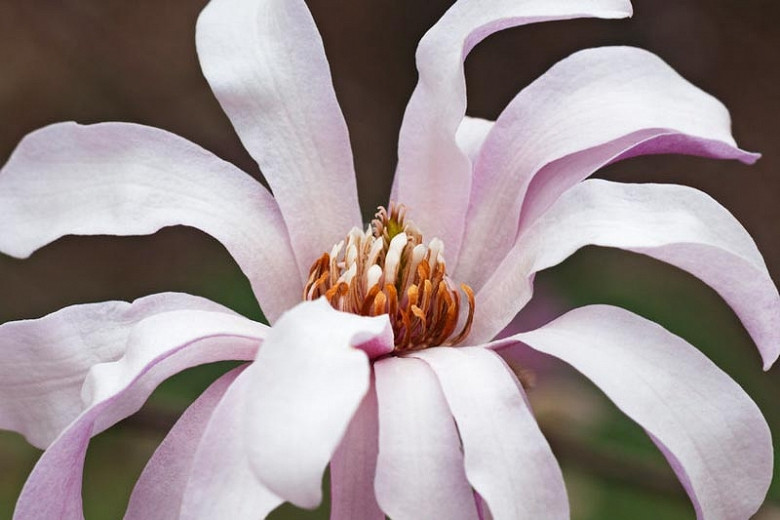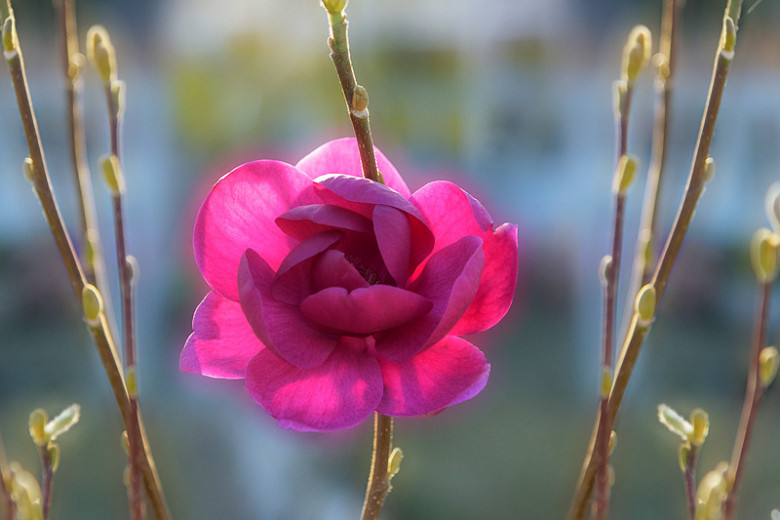Magnolia Daybreak
Delightfully fragrant, award-winning Magnolia ‘Daybreak’ is a small deciduous tree adorned with a profusion of rose-pink flowers in mid to late spring. Emerging with a light green cast, the large flowers, up to 10 in. across (25 cm), count 8 splayed-out tepals which are lighter on the inside.
Delightfully fragrant, award-winning Magnolia 'Daybreak' is a small deciduous tree adorned with a profusion of rose-pink flowers in mid to late spring. Emerging with a light green cast, the large flowers, up to 10 in. across (25 cm), count 8 splayed-out tepals which are lighter on the inside. Since they bloom late enough, they usually escape early spring frost damage. The elliptic, medium-green foliage is attractive. 'Daybreak' is pollution tolerant, therefore it makes an excellent specimen and urban tree.
- Grows with an upright habit, up to 30-40 ft. tall (9-12 m) and 15 ft. wide (5 m)
- Winner of the prestigious Award of Garden Merit of the Royal Horticultural Society and recipient of a Gold Medal from the Pennsylvania Horticultural Society.
- A full sun to part shade lover, this plant is best grown in consistently moist, slightly acidic, organically rich, well-drained soils. Neutral to slightly alkaline soils are also suitable for growth. Magnolias are adaptable to clay, loam or sandy soils, but most grow poorly in wet or poorly drained soils. Provide a site sheltered from cold, dry winds as buds and flowers may be damaged by cold winds. Late frosts may damage flower buds too.
- May be attacked by capsid bugs, snails, horse chestnut scales, coral spots, gray mold, and honey fungus.
- Spectacular as a specimen plant for dramatic spring blooms. Great flowering tree for city gardens or cottage gardens.
- Magnolia pruning should be carried out in midsummer when in full leaf
- Deciduous Magnolias are best planted when dormant, in late fall or winter in warmer climates and early spring in cold climates. Evergreen magnolias are best planted in early spring. For the first 6 to 12 months after planting, both types will benefit from mulch and regular irrigation during warm or dry weather.
- Propagate by softwood cuttings in early summer or semi-ripe cuttings in late summer
Requirements
| Hardiness | 5 – 8 |
|---|---|
| Heat Zones | 5 – 9 |
| Climate Zones | 4, 5, 6, 7, 8, 9, 14, 15, 16, 17, 18, 19, 20, 21, 22, 23, 24 |
| Plant Type | Trees |
| Plant Family | Magnolia |
| Exposure | Full Sun, Partial Sun |
| Season of Interest | Spring (Mid,Late) |
| Height | 30' – 40' (9m – 12m) |
| Spread | 13' – 15' (3.9m – 4.5m) |
| Water Needs | Average |
| Maintenance | Low |
| Soil Type | Clay, Loam, Sand |
| Soil pH | Acid, Neutral |
| Soil Drainage | Moist but Well-Drained, Well-Drained |
| Characteristics | Cut Flowers, Fragrant, Plant of Merit, Showy |
| Attracts | Birds, Butterflies |
| Garden Uses | Beds and Borders |
| Garden Styles | City and Courtyard, Informal and Cottage, Traditional Garden |
